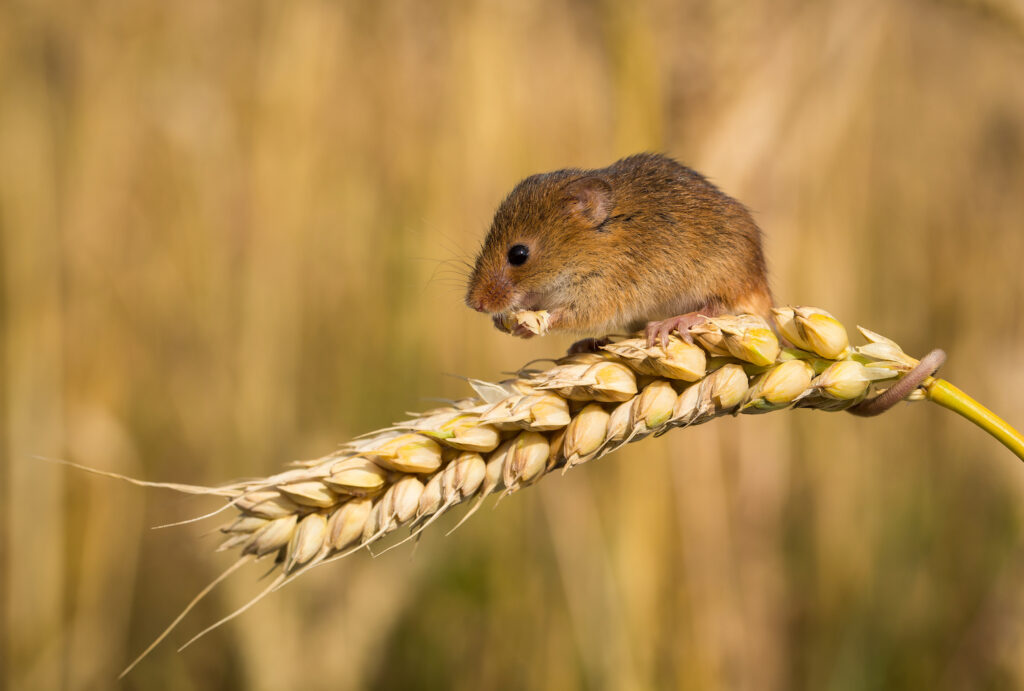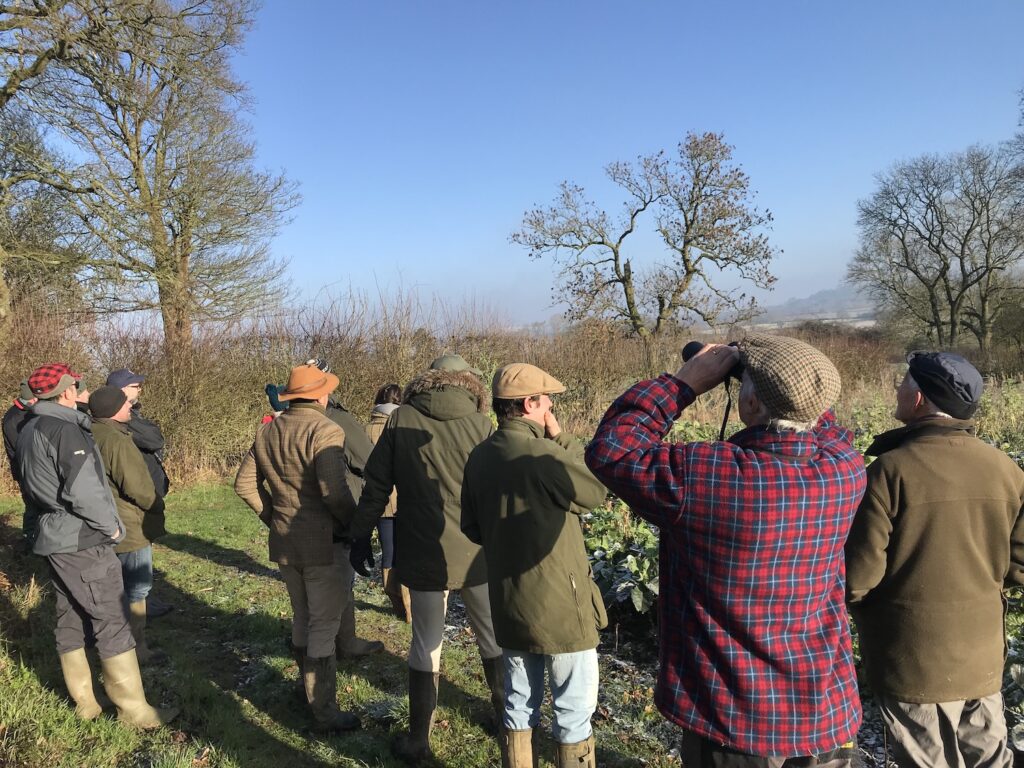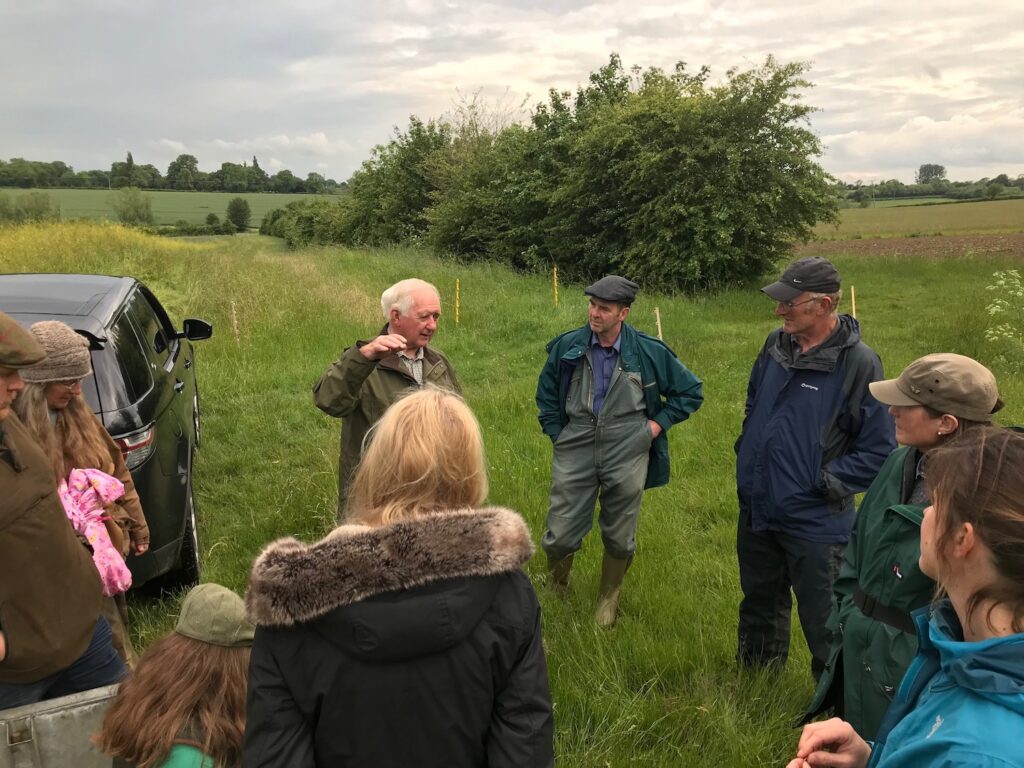Warwickshire farmers benefit from environmental support
24th January 2022
With increasing pressure on farms to reduce environmental impacts and adhere to a rising number of standards, the Arden Farm Wildlife Network allows farmers to access free guidance to improve habitats and, potentially, farm productivity too. Farmers Guide teamed up with The Wildlife Trusts for a series of articles to learn more about its work with farms…

One Warwickshire farmer in the Arden Farm Wildlife Network discovered harvest mouse nests on the farm, despite previously believing them to be extinct in the region. (stock photo)
When Warwickshire Wildlife Trust first formed the Arden Farm Wildlife Network in 2018 it aimed to help farmers make more space for nature, whilst maintaining productive farms for growing high quality, healthy food.
From the 16 founding members, the group, which is free to join, has expanded to include 46 farms who collectively farm nearly 10,500ha of land across Warwickshire – ranging from large estates with thousands of hectares, to family farms, to smallholders.
Farmer-led training
The network is very much farmer-led and relies on members suggesting areas they would like to learn more about, so the Trust can identify specialist speakers for training.
Topics so far have included everything from harvest mice and water voles, through to barn owls and lapwing. As well as a focus on individual species, the farmers have been particularly keen to keep up with cutting-edge areas such as regenerative agriculture, soil health and nutrition, cover crops and agroforestry.
Other popular subjects include pollen and nectar sequencing to get a greater variety of species into hedgerows and flowering plants and trees.
Learning from each other
Peer learning has been a key part of the network, according to sheep and arable farmer John Plumb. He added: “One of the really lovely parts of group is that there’s no sense whatsoever of any competition. All members are freely sharing ideas and information with no sense of censure.”
John, who farms the 300-acre Southfields Farm Ltd and grows mainly wheat, OSR, barley and maize, said key projects for him have been those on managing field margins. A project on harvest mice revealed nests on the farm, despite previously believing them to be extinct in the region. They subsequently learned how to better manage that margin and identify nests.
As a result of working with the scheme, the farm’s wildlife has seen an overall boost, including a greater variety of songbird life. Sparrow populations are back to where they were in the 60s, John said.
An unexpected bonus has been the project’s role in helping to tackle rural social isolation. Network leaders say farmers have really valued coming together to share ideas, compare approaches, celebrate successes and reflect on failures. It’s all part of the learning.
The group consists of a variety of farmers – from young farmers fresh out of agricultural college, to those who have been farming for a long time, but with falling direct payments, want to learn to do things differently.

Farmers attending a farmland bird and wild bird seed cover crop event.
“Not too prescriptive”
One important aspect of the network is that it is not too prescriptive, explains Ian Jelley, director of living landscapes at Warwickshire Wildlife Trust. Farmer members are not tied to specific prescriptions when they sign-up; they sign-up simply on the basis that they want to learn and collaborate.
This makes it significantly different to many other funding schemes – and in a world of uncertainty when it comes to new environmental policies, Ian says the farmers have welcomed the opportunity to learn in a safe space and take on voluntary measures.
“We’ve found that to be really powerful because it’s actually given the flexibility to encourage farmers to tailor the advice to the opportunities on their farms and embrace the opportunity to learn, but they haven’t been tied to specific prescriptions.”
Nature vs productivity
As ELMs dominates the headlines, a key concern in the farming industry has been whether so much land will be taken out of food production for environmental projects, we could end up importing more food – which may have been produced to lower standards. And the lack of references to food production in the Ag Bill is a worry shared by John.
However, when it comes to projects being carried out by the network, nature and healthy food production can work in harmony. “Efficient food production is not necessarily at the expense of nature and conservation of nature doesn’t have to be at the expense of food production,” he commented.
“The plus of a relatively small farm is you know the land very well; you know your productive and less productive areas. There are all kinds of things you can do in field corners that you’ve been struggling to cultivate every year to get a crop out of. You can save the effort and have environmental benefits at the same time. There doesn’t have to be an overall cost to production.”
Reflecting on changes in agricultural norms, he notes that in his early days of farming, there was a great divide between naturalists and farmers; between those who wanted to farm in a nature friendly way, and those who wanted to farm for food production. But over the years, nature friendly farming has become mainstream.
And attitudes to productivity are also changing. “We used to measure productivity in terms of the yield off the field,” John explained. “Now we’re saying ‘well maybe I can accept a slightly lower yield, but in the process of doing that I’ll be using a lot less inputs’ – and input costs are skyrocketing. So actually, the profit at the end of the day is as good, or might be even better, and you’re helping nature along the way.”

The network hosted a species-rich green hay translocation training event.
Funding successes and future plans
One of the key successes of the network so far, Ian says, is the foundation it provides to attract further funding. The farmer cluster provides the perfect platform for a landscape-scale approach to project work and farmers are forthcoming with suggestions on the species it should target. This combines to make an excellent case for support when applying for funds.
To date Warwickshire Wildlife Trust has secured additional funds to support tree sparrows, barn owls, tree planting and the latest success was a project to recreate wildflower meadows. These mini projects within the farmer cluster have helped to foster better working relationships and deliver significant added value to the farmers participating, whilst also providing a lifeline to some of our most threatened species.
Ian says: “We’re facing an ecological emergency and 15% of all of our wildlife here in the UK is under threat from extinction. We know that farmers can play a critical role in supporting nature’s recovery and with agricultural land covering 70% of the land area, we really can’t bring our wildlife back without them.
“The key to making this all work is finding ways to support farmers in making space for nature, whilst maintaining productive farms. Managed in the right way, farmland can grow food and also form part of our nature recovery networks. British farmers produce some of the highest quality food in the world and farmers we’re working with are showing how they can do that whilst also playing a leading role in nature’s recovery.”
Two further farm clusters have now been launched in Warwickshire – this year the network will be joined by a South Warwickshire Sustainable Farming Group and the Upper Avon and Leam Sustainable Farming Group. These will help to bring local neighbouring farmers together but also collaborate where appropriate on issues that benefit members from all three geographic areas.
Going forward it’s hoped the network will work closely with other organisations that are also aiming to support farmers in similar ways – with a local focus encouraging neighbouring farms to come together to share machines and ideas. This is something that has already begun with wild bird seeds, for example – a discount has been negotiated with seed suppliers so the group can buy collectively.
As UK agriculture heads into new territory with the phase out of direct payments and the launch of ELMs and other schemes, it is also hoped that the network will put members on a stronger footing when it comes to taking advantage of new opportunities.
Group training for the Arden Farm Network is delivered on farm or via Zoom which has helped to ensure the success of the project through Covid-19 lockdowns. To find out more visit: www.warwickshirewildlifetrust.org.uk/working-farmers-and-landowners/arden-farm-wildlife-network
